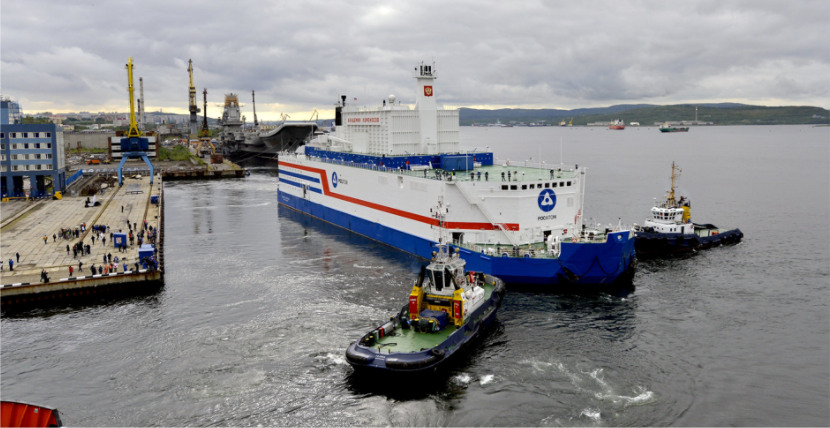International
China starts again building floating reactors

China is pursuing plans to develop floating nuclear reactors that could power military facilities it has built in disputed areas of the South China Sea, according to the top U.S. military commander in the Pacific and State Department officials, a prospect they warn would undermine regional security and stability. The news is reported by the Washington Post.
After more than a decade of research and development and the safety concerns of Chinese regulators, China appears to be moving ahead with its plans-at a time when the international community has yet to come up with standards governing the safe use of floating reactors, U.S. officials said.
About a year ago, China had decided to give a temporary halt to the construction of these floating nuclear power plants based on strategic considerations. Now, the WP says, it appears that this decision is being reviewed.
U.S. officials say they believe an eventual deployment is still several years away. However, the concern is great enough to cause Admiral John Aquilino, who heads the U.S. Indo-Pacific Command, to raise a warning flag.
“China’s intended use of floating nuclear power plants has a potential impact on all nations in the region,” said Aquilino, who will leave the command on Friday. “Chinese state media have publicly stated Beijing’s intention to use them to strengthen its military control of the South China Sea, further exercising its illegal territorial claims. China’s claim to sovereignty over the entire South China Sea has no basis in international law and is destabilizing the entire region.”
A fear shared by the State Department.
“Our concern is that the closer they get to deploying floating nuclear power plants, the faster they will use them for purposes contrary to the national security of the United States and the broader security of the region,” a senior State Department official said in an interview. The official spoke on condition of anonymity, according to ground rules established by the department.
Beijing’s State Administration of Science, Technology and Industry for National Defense, which oversees approved nuclear-related projects,. Concerns about China’s intentions were expressed obliquely during the Obama administration and more forcefully during the Trump administration. Today, U.S. officials say China is at an advanced stage of research and development to build reactors for military purposes.
Russia is the only country to operate a floating nuclear power plant, the Akademik Lomonosov, which became operational in December 2019. Photos of the facility show a multi-story cogeneration plant on an unpowered barge. According to IEEE Spectrum, it consists of two pressurized water KLT-40S reactors, similar to those powering Russian nuclear icebreakers, and two steam turbine plants.

Akademik Lomosotov
China began designing floating nuclear reactors in 2010. In 2016, the state-run Global Times Online reported that the government planned to install 20 such reactors in the South China Sea to support commercial development, oil exploration, and seawater desalination.
But the same article also boasted military applications: Every island and reef in the South China Sea, combined with a nuclear-powered floating platform,” is essentially “a nuclear-powered aircraft carrier…equipped with combat aircraft and missile systems.” Their military advantage far exceeds that of a U.S. carrier fleet coming in from afar.”
Amid escalating tensions in the South China Sea, these reactors can “ensure the smooth conduct of military exercises,” researchers at a State Council-affiliated institute pointed out in a 2020 article.
There is also much skepticism about the subject: first of all, despite long years of study, not a single one has been built, not even as a prototype, despite the fact that China certainly has the necessary know-how. Another problem is that these reactors are not on ships but are fixed, so they would become prime targets in case of military conflict. This would risk making the entire artificial island and much of the surrounding sea radioactive.
Are we sure this is a good idea?






